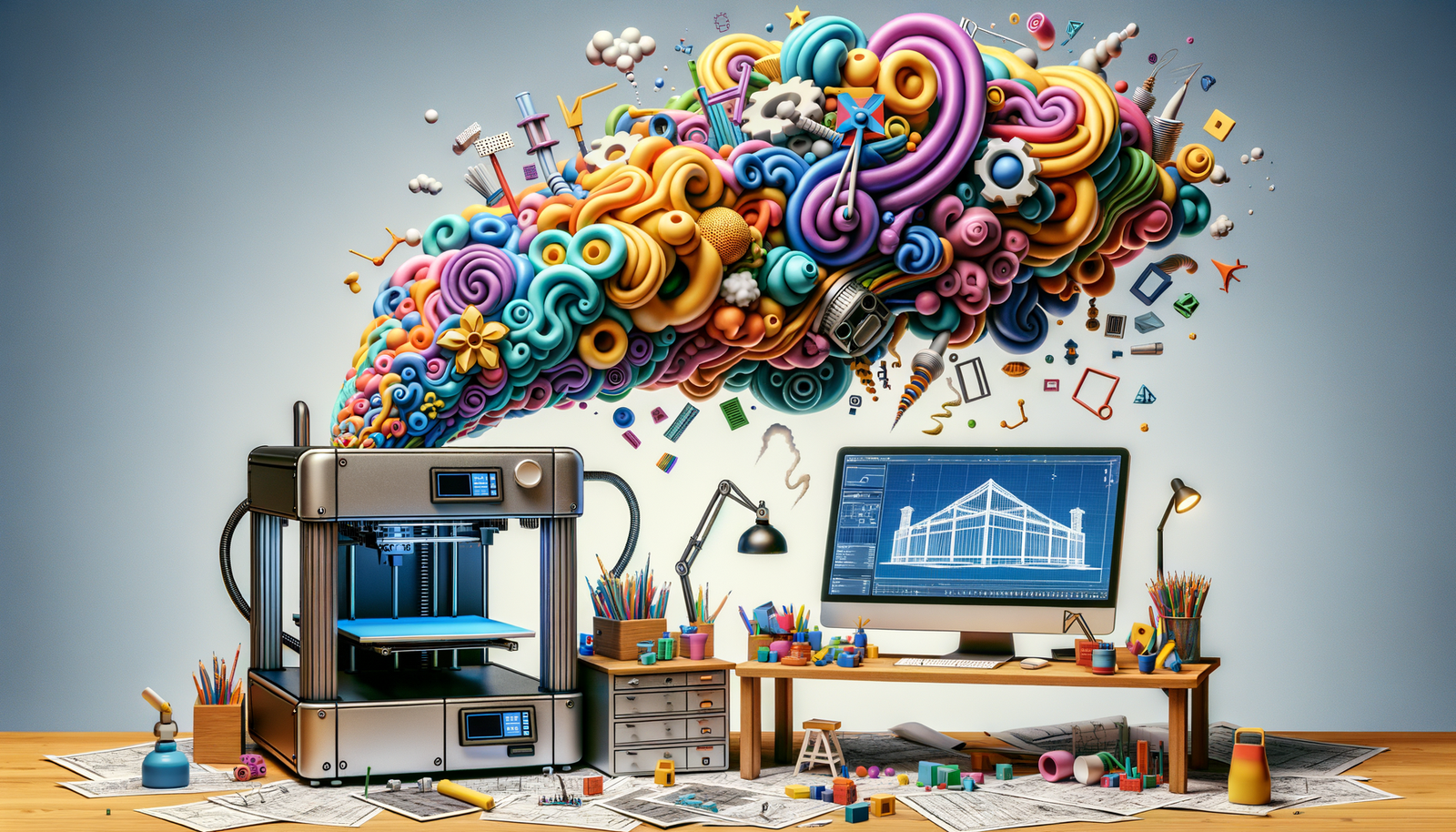Your Cart is Empty
Customer Testimonials
-
"Great customer service. The folks at Novedge were super helpful in navigating a somewhat complicated order including software upgrades and serial numbers in various stages of inactivity. They were friendly and helpful throughout the process.."
Ruben Ruckmark
"Quick & very helpful. We have been using Novedge for years and are very happy with their quick service when we need to make a purchase and excellent support resolving any issues."
Will Woodson
"Scott is the best. He reminds me about subscriptions dates, guides me in the correct direction for updates. He always responds promptly to me. He is literally the reason I continue to work with Novedge and will do so in the future."
Edward Mchugh
"Calvin Lok is “the man”. After my purchase of Sketchup 2021, he called me and provided step-by-step instructions to ease me through difficulties I was having with the setup of my new software."
Mike Borzage
Streamlining Design Pipelines: The Role of Workflow Automation in Modern Design Processes
January 02, 2025 8 min read


Defining Workflow Automation in Design Pipelines
In today's fast-paced design environment, workflow automation has emerged as a pivotal component in enhancing efficiency and productivity. Workflow automation in design pipelines refers to the use of technology to automate the sequence of processes involved in creating a design, from conceptualization to final output. This involves utilizing software and tools to perform repetitive tasks, manage data flow, and streamline operations without the constant need for human intervention. By integrating automation into the design process, organizations can reduce errors, save time, and allow designers to focus on more creative and strategic tasks. The essence of workflow automation lies in its ability to connect disparate systems and processes, thereby creating a cohesive and efficient pipeline that supports the dynamic needs of modern design projects.
The Evolution of Design Pipelines
The journey of design pipelines has been marked by continuous evolution, driven by technological advancements and changing market demands. Traditionally, design processes were manual and linear, involving a series of isolated steps that required significant human input at each stage. With the advent of computer-aided design (CAD) software in the late 20th century, there was a shift towards digitalization, which introduced new efficiencies but also new complexities. As projects grew in scope and complexity, the limitations of manual coordination and data management became apparent. This led to the development of integrated design environments and collaborative tools. The rise of the internet and cloud computing further transformed design pipelines by enabling remote collaboration and access to vast computational resources. Today, the push towards automation is a response to the need for faster turnaround times, higher quality outputs, and the ability to handle complex, data-intensive projects. The evolution reflects a move from manual, time-consuming processes to agile, automated workflows that leverage the latest in technology to meet the demands of modern design challenges.
Purpose and Scope of the Article
The purpose of this article is to explore the significant role that workflow automation plays in contemporary design pipelines. By delving into the key technologies and tools that drive automation, we aim to provide a comprehensive understanding of how these advancements contribute to improved efficiency, accuracy, and collaboration in design processes. This article will cover the impact of artificial intelligence, integration platforms, cloud-based solutions, and robotic process automation on design workflows. It will also examine the benefits that organizations can reap from adopting automated workflows, including cost savings and resource optimization. The scope extends to discussing the future outlook of workflow automation, highlighting emerging trends and potential advancements that could further revolutionize the design industry. By the end of this article, readers should have a clear understanding of why embracing workflow automation is essential for staying competitive and innovative in the ever-evolving field of design.
Artificial Intelligence and Machine Learning
Artificial Intelligence (AI) and Machine Learning (ML) are at the forefront of driving workflow automation in design pipelines. AI algorithms can analyze vast amounts of data to identify patterns and make decisions that mimic human reasoning, while ML enables systems to learn and improve from experience without being explicitly programmed. In design processes, AI and ML can automate repetitive tasks such as generating design variations, optimizing layouts, and predicting potential issues before they arise. For instance, AI-powered tools can automatically adjust design parameters based on predefined constraints, thus accelerating the prototyping phase. Additionally, ML models can assist in resource allocation by predicting project timelines and workloads. The integration of AI and ML into design software enhances decision-making by providing insights derived from data analytics, ultimately leading to more informed and efficient design processes. By leveraging these technologies, designers can focus on creativity and innovation, trusting that routine and data-intensive tasks are handled efficiently by intelligent systems.
Integration Platforms and APIs
The use of Integration Platforms and Application Programming Interfaces (APIs) is crucial in enabling seamless connectivity between different design software and tools. Integration platforms serve as intermediaries that facilitate the communication and data exchange between disparate systems, ensuring that information flows smoothly throughout the design pipeline. APIs provide the protocols and tools necessary for building software applications that can interact with other software components or systems. By utilizing integration platforms and APIs, organizations can automate workflows that span multiple applications, reducing the need for manual data entry and minimizing the risk of errors. This interoperability allows for real-time updates and synchronization across various stages of the design process. For example, changes made in a 3D modeling software can automatically update in a rendering application, ensuring consistency and saving time. The ability to integrate different tools enhances collaboration among team members who may be using different software, fostering a more cohesive and efficient workflow. Ultimately, integration platforms and APIs are essential in building a connected ecosystem that supports the automation and optimization of design pipelines.
Cloud-Based Solutions
Cloud-based solutions have revolutionized the way design workflows are managed by providing scalable and flexible platforms for automation. By leveraging cloud computing, organizations can access powerful computational resources without the need for significant upfront infrastructure investment. Cloud services enable designers to work collaboratively in real-time, regardless of their physical location, by providing centralized access to design tools and data. This fosters greater teamwork and accelerates project timelines. Additionally, cloud platforms offer scalability, allowing organizations to adjust their resource usage based on project demands. Automated workflows can be easily deployed and managed in the cloud, benefitting from features such as automatic backups, security updates, and integration with other cloud services. The cloud also facilitates the use of advanced technologies like AI and ML by providing the necessary computational power and storage. Moreover, cloud-based solutions often operate on a subscription model, which can lead to cost savings and easier budgeting. The flexibility and efficiency brought by cloud computing are instrumental in enhancing workflow automation in design pipelines.
Robotic Process Automation (RPA)
Robotic Process Automation (RPA) involves the use of software robots or "bots" to automate routine and rule-based tasks within workflows. In the context of design pipelines, RPA can handle repetitive tasks such as data entry, file conversions, and report generation, which are essential but time-consuming when performed manually. By implementing RPA, organizations can ensure that these tasks are executed consistently and accurately, freeing up designers to focus on more complex and creative aspects of their work. RPA tools can interact with multiple applications just like a human user but at a much faster pace and without the risk of fatigue or errors associated with manual processing. For example, an RPA bot can automatically update project management systems with the latest design changes, compile design documents, or synchronize data between different software platforms. The use of RPA leads to increased operational efficiency and can significantly reduce the time taken to complete mundane tasks. Furthermore, RPA is scalable and can be adapted to handle varying workloads, making it a valuable component in automating design workflows.
Increased Efficiency and Productivity
One of the most significant benefits of enhancing workflow automation in design pipelines is the marked increase in efficiency and productivity. By automating repetitive and time-consuming tasks, designers can focus their skills on innovation and problem-solving rather than administrative duties. Automated workflows streamline processes, reduce bottlenecks, and accelerate project timelines. For instance, automated version control ensures that team members are always working with the most recent files, eliminating delays caused by outdated information. Additionally, automation allows for tasks to be executed in parallel rather than sequentially, which can significantly shorten project duration. The use of AI and ML can also optimize resource allocation, ensuring that team members are utilized effectively based on project needs. Overall, workflow automation leads to faster turnaround times and the ability to take on more projects without compromising on quality, thereby boosting the organization's productivity and competitive edge.
Improved Accuracy and Consistency
Workflow automation enhances the accuracy and consistency of design outputs by minimizing the potential for human error. Manual data entry and repetitive tasks are prone to mistakes that can have costly repercussions in terms of rework and project delays. Automation ensures that tasks are performed exactly as specified every time, maintaining high-quality standards throughout the design process. For example, automated calculations and data transfers eliminate errors in numerical data, while standardized templates and processes ensure consistency in documentation and deliverables. Moreover, automation allows for the enforcement of compliance with industry standards and regulations, as automated checks can be incorporated into the workflow. This not only improves the quality of the designs but also builds trust with clients and stakeholders who can rely on the consistency of the deliverables. In summary, automation is key to achieving precision and uniformity in design outputs.
Enhanced Collaboration and Communication
Automation plays a crucial role in enhancing collaboration and communication within design teams and across departments. Automated workflows facilitate the seamless sharing of information and updates, ensuring that all team members have access to the latest data and project status. For instance, automated notifications can alert team members of changes or tasks that require their attention, reducing delays caused by communication gaps. Integration of collaborative tools allows for real-time co-authoring and feedback, fostering a more interactive and engaged team environment. Additionally, automation can bridge the gap between different departments by integrating their workflows, such as connecting design and manufacturing processes. This integration ensures that downstream processes are aligned with design changes, reducing miscommunication and the need for rework. Enhanced collaboration leads to a more cohesive team effort, which is essential for the successful completion of complex design projects.
Cost Savings and Resource Optimization
Adopting workflow automation in design pipelines results in significant cost savings and optimal utilization of resources. By automating routine tasks, organizations reduce the labor hours required for manual processing, which translates into lower operational costs. Automation also minimizes errors that can lead to costly rework, wastage of materials, and delays. The efficient allocation of resources ensured by automation means that human capital is directed towards high-value activities that contribute more directly to the organization's goals. Additionally, tools like cloud-based solutions operate on scalable models allowing organizations to pay for only what they use, thus optimizing expenditure on infrastructure and software licenses. By reducing overheads and maximizing the use of available resources, automation helps in improving the organization's bottom line and allows for investment in innovation and growth opportunities.
Summary of Key Points
In summary, workflow automation is a transformative force in modern design pipelines, leveraging technologies such as AI, integration platforms, cloud computing, and RPA to streamline processes and enhance efficiency. Automation addresses several critical aspects:
- Efficiency and Productivity: Automating tasks accelerates project timelines and allows designers to focus on creative work.
- Accuracy and Consistency: Reduces human errors and ensures consistent quality in design outputs.
- Collaboration and Communication: Facilitates better teamwork and information flow across different teams and departments.
- Cost Savings: Optimizes resource utilization and reduces operational costs through efficient processes.
Future Outlook
The future of workflow automation in design pipelines is poised for exciting advancements. Emerging trends include the integration of advanced AI and ML algorithms that can not only automate tasks but also provide predictive analytics and generative design solutions. The rise of the Internet of Things (IoT) will further connect devices and systems, allowing for real-time data exchange and autonomous decision-making within design workflows. Additionally, the adoption of virtual and augmented reality (VR/AR) is expected to enhance collaborative design experiences, making automation in rendering and simulation processes even more crucial. There's also a growing emphasis on sustainability, and automation will play a key role in optimizing designs for environmental impact. The continued development of low-code and no-code platforms will make automation more accessible, enabling designers to customize and implement automated workflows without deep programming knowledge. Overall, the future holds the promise of more intelligent, integrated, and user-friendly automation tools that will further revolutionize design pipelines.
Final Thoughts
In an industry where speed, innovation, and precision are paramount, workflow automation is not just a convenience but a necessity. Design teams that adopt automation position themselves at the forefront of technological advancement, unlocking the potential for greater creativity and efficiency. Automation empowers organizations to tackle complex projects with confidence, knowing that their processes are optimized for success. As the technological landscape continues to evolve, the imperative for embracing workflow automation becomes even more pronounced. Organizations that hesitate may find themselves struggling to keep pace with competitors who are leveraging these tools to drive innovation and deliver superior results. Therefore, investing in workflow automation is a strategic move that can yield significant dividends in terms of performance, growth, and market relevance.
Also in Design News

RhinoArtisan: Discover the Power of Boutique by RhinoArtisan: Parametric Components
April 25, 2025 1 min read
Read More
💎 RhinoArtisan - Boutique: Design jewelry with your customer. In your store. In seconds.
April 25, 2025 1 min read
Read More
Integrating Additive Manufacturing with CAD: Revolutionizing Design and Production Workflows
April 25, 2025 7 min read
Read MoreSubscribe
Sign up to get the latest on sales, new releases and more …


